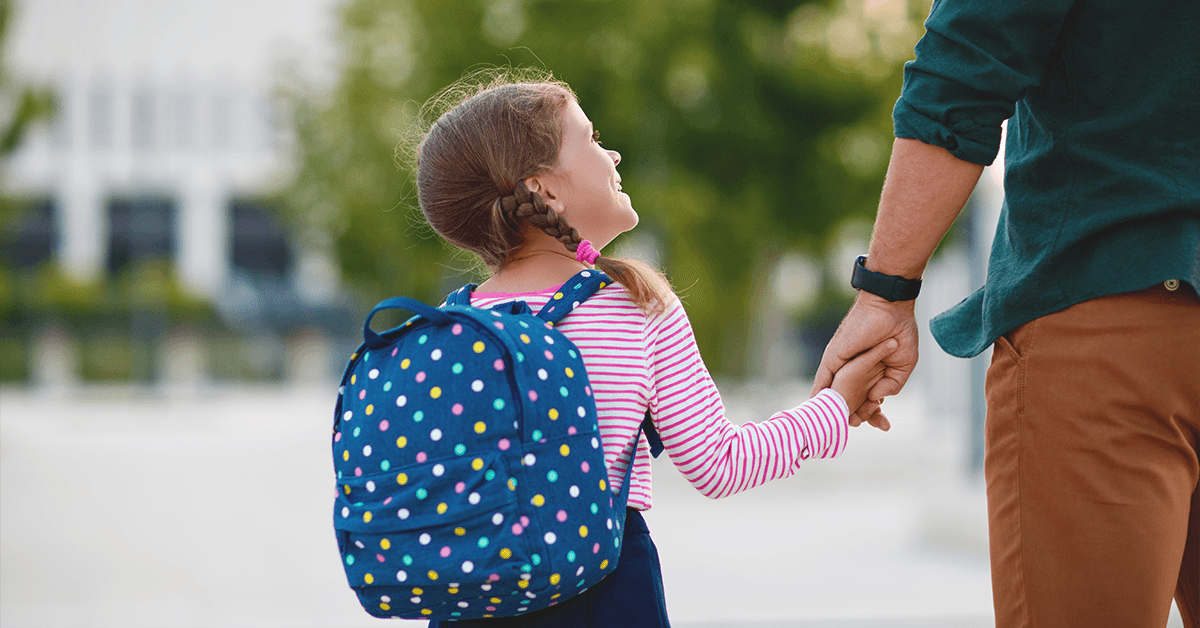Understanding Back-to-School Anxiety
Children often struggle to articulate their feelings, which can make it difficult to identify when they are anxious. In the weeks leading up to the start of school, signs of anxiety in your child may manifest as follows:
- Increased clinginess or hesitation to part from parents
- Physical symptoms such as headaches or stomach discomfort
- Reduced appetite or difficulty sleeping
- Irritability or mood swings
- Crying or emotional outbursts (a way for children to release built-up feelings)
Common Fears from Kindergarten to 12th Grade
Elementary School
At this stage, kids frequently express concerns about changes in their routines and environments.
Separation from Parents
Children may wonder, “What if something happens to Mom or Dad? What if no one is available to pick me up?”
Going to the Bathroom Alone
Questions such as “What if I get lost on the way back to my classroom? What if the toilet overflows?” often arise.
Middle School
Middle schoolers often grapple with issues related to social acceptance and academic performance.
Navigating the School System
Concerns may include, “What if I can’t open my locker? What if I miss class?”
Finding Friend Groups
Children may fear, “What if the other kids tease me? What if my friends aren’t in my classes?”
High School
Teenagers often navigate social pressures alongside increasing responsibilities, leading to a variety of stressors.
Dealing with Peer Pressure
Thoughts like, “What if my friends engage in activities I’m uncomfortable with?” may surface.
Future Planning
Students might question, “How will I manage my grades? What are my plans post-graduation?”
Building Resilience
Children dealing with anxiety often exaggerate the likelihood of negative outcomes while underestimating their coping abilities. Tania Johnson, a registered psychologist and co-founder of the Institute of Child Psychology, suggests that when children face their fears and succeed, they form new neural pathways in their brains, fostering resilience.
Here are some strategies to support your child in navigating anxiety:
Engage in Open Dialogue
During anxious moments, children benefit from a calm, compassionate companion who validates their feelings without dismissing them.
Tip: Teens might find it easier to share their feelings while engaged in an activity together (like driving), while younger kids may benefit from picture books that can help expand their emotional vocabulary by discussing character feelings and thoughts.
Confront Fears
While avoidance may seem like a natural response to fear, facing challenges head-on can foster confidence and adaptability.
Tip: Break fears down into smaller, attainable steps. For instance, a kindergartener feeling anxious about using the school bathroom could first practice going with a parent before school starts, gradually working up to the task alone.
Promote a Sense of Belonging
To ensure that school feels safe and welcoming, Johnson underscores the importance of helping children feel connected to their environment.
Tip: Prepare before the first day by visiting the school playground multiple times or organizing a school tour to meet the teacher.
Model Calmness
Children are highly attuned to their parents’ moods and reactions.
Tip: Reflect on your emotional state. Are you feeling anxious about the school year? Are there pressures you might be exerting on your child? Recognizing your own feelings can help you remain present for your child.
Connect with Support Networks
As per Johnson, positive transformations are more sustainable when parents collaborate with their child’s community. Consult with teachers and school counselors for strategies tailored to support your child.
Tip: Most children’s anxiety tends to diminish as the school year progresses. However, if your child’s anxiety persists or interferes significantly with their daily activities, seeking the guidance of a mental health professional experienced in child anxiety may prove beneficial.
Returning to Basics
In the lead-up to school, it’s crucial for both kids and parents to soothe their nervous systems. Johnson emphasizes focusing on the “essential pillars of wellness,” outlined below:
Promote Calmness
Though it might be tempting to fill the final days of August with activities, Johnson advises that it’s more beneficial to simplify and slow down.
Nutrition
Engage children in creating a back-to-school grocery list that includes a variety of colorful fruits and vegetables, whole grains, and healthy proteins and fats.
Hydration
Keeping kids hydrated is vital, as dehydration can hinder attention, memory, and problem-solving abilities. Make sure they have a water bottle handy.
Sleep Hygiene
Start adjusting to regular sleep schedules gradually, moving in 15-minute intervals until you achieve your target times.
Physical Activity
Encourage movement: for younger children, this might mean active play, while older kids may enjoy going for family bike rides.
Herbal Calm for Kids
According to Nicole Davies, a practitioner of traditional Chinese medicine, the following herbs can help promote positive moods in children:
- Passionflower: Helps reduce anxiety and enhances attention span.
- Lemon Balm: Alleviates stress and anxiety while improving mood and cognitive performance.
- Chamomile: Lowers cortisol levels, promotes sleep, and lessens anxiety.
Square Breathing Technique
Square breathing is a simple yet effective method for teaching kids deep breathing exercises. It works for adults as well!
To practice together, trace a square in the air using your fingertip. Starting at the bottom left corner, outline the square according to the following steps (each side corresponds to one step):
- Breathe in for a count of 4.
- Hold your breath for a count of 4.
- Breathe out for a count of 4.
- Pause for a count of 4.
Tip: Introduce square breathing during calm moments, so it becomes easier to access during times of stress.
Addressing Children’s Concerns
| Suggestion | Benefits | Suggested Phrase |
| Acknowledge their feelings. | Shows empathy. | “I can see you’re really anxious about going back to school…” |
| Provide three reasoning statements. | Demonstrates understanding. | “… because your best friend isn’t in your class, you don’t know your new teacher, and math has been tricky for you in the past…” |
| Engage in problem-solving together. | Builds confidence. | “… but I believe we can get through this together. What strategies worked for us last year?” |
Happiness Rooted in Learning, Not Just Achievement
A recent study featured in the Journal of Youth and Adolescence revealed that children who perceive their parents as prioritizing academic success over other values, like kindness, tend to face higher risks of anxiety, depression, and low self-esteem. Surprisingly, these children also tend to receive lower grades. Instead of fixating solely on report cards, encourage your child’s unique interests and the pursuits that bring them joy.






